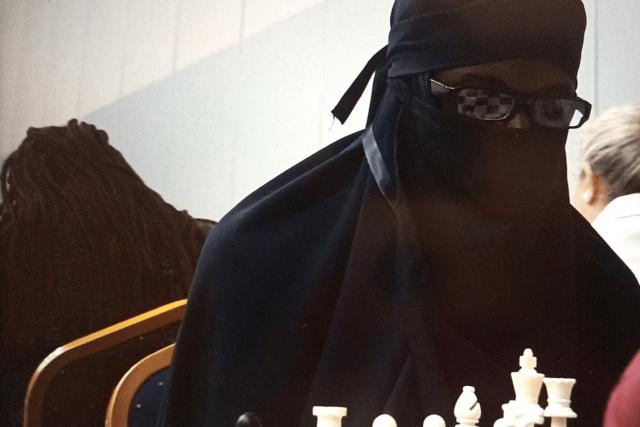Why imagine improbable devices like the famous anal plug lent by some to American Hans Niemann when he was accused of cheating by Magnus Carlsen a few months ago? Stanley Omondi, a student at the University of Nairobi, has found a far less sophisticated (and intrusive) way of cheating at chess. Or so he thought.
By donning a niqab, the full-face veil worn in certain Muslim traditions, Omondi thought he could pocket the prize money for the women’s tournament at the Kenyan Chess Championship (3,400 euros for the winner). But her enterprise came to nothing.
The scene is worthy of a bad sketch. Alerted by the dubious results and strange appearance of a competitor, the head referee of the competition takes the initiative of isolating the player to check her identity. And then, astonishment! The previously unknown Awuor Millicent turns out to be a man!
Quiet but not discreet
Some had noticed that this player, under her camouflage, hadn’t uttered a word since the start of the tournament. Others had commented on her strange gait, her broad shoulders and her not exactly girl-sized Vans… But how could we be sure? It took two wins in a row against Gloria Jumba, former champion of Kenya, and Ampaira Shakira, Uganda’s number 1, for the organization to decide to intervene. For despite an estimated ELO of 1500, the level of an average club player, with which he had no chance of shining in the Open tournament, in which a few Grand Masters took part, Omondi could compete with the best players in the women’s tournament.
Not very good at disguises, our impostor unwittingly put his finger on an incongruity. In a discipline where the physical dimension is limited and only brains are involved, the difference in the level of play between men and women is abysmal. Judit Polgar may have been able to beat Garry Kasparov in 2002, but this exception had no future.
For example, China’s Yfan Hou, the current world number 1, is not in the men’s top 100 with an ELO of 2628. The explanations are cultural. Girls, who play less often, are less inclined to compete than boys, who have more natural affinities with the game, a metaphor for warlike confrontation.
To promote chess among girls, special tournaments, rankings and standards were created in the 20th century. But these laudable initiatives have had the effect of keeping girls away from the highest level. Today, they are encouraged to take part in mixed competitions to correct this phenomenon, but there’s a long way to go and, in the meantime, Stanley Omondi could set an example.

